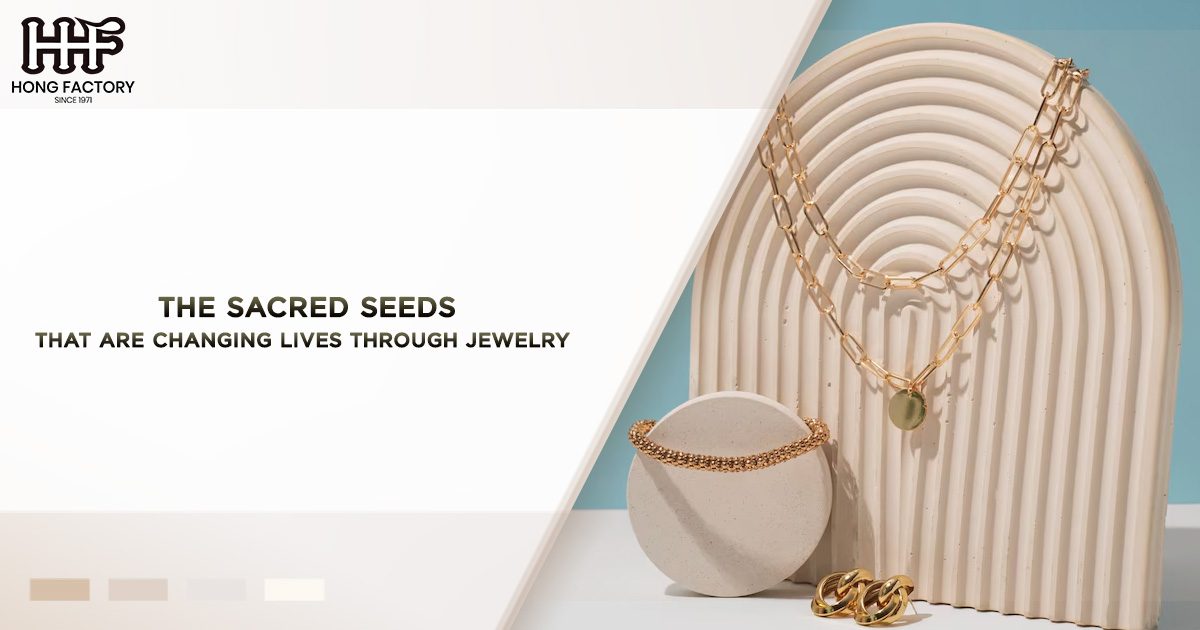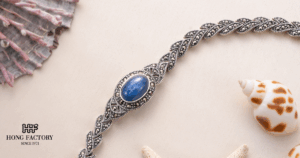In a world where mass-produced fashion often overshadows traditional craftsmanship, a revival is taking place. This resurgence celebrates the intersection of art, culture, and spirituality through the use of sacred beads in jewelry.
The ancient practice of crafting jewelry from natural seeds is not just about aesthetics; it’s a deeply rooted tradition that carries immense cultural significance. These sacred seeds, with their spiritual meaning and traditional craft, are transforming lives by connecting people to their heritage in profound ways.
The Cultural Significance of Sacred Beads
For generations, cultures around the world have used seeds in jewelry, endowing them with a sacred aura that speaks to the spiritual meaning of each piece. These beads are not mere decorative elements; they are powerful symbols imbued with the history, beliefs, and values of their civilizations.
Rudraksha : The Tears of Shiva
Among the most revered sacred beads in Hindu culture are the Rudraksha seeds. Often referred to as “the tears of Shiva,” these beads hold a significant place in spiritual practices. Legend has it that Lord Shiva, the destroyer god, wept tears of compassion for humanity, which crystallized into Rudraksha seeds upon reaching the earth. These seeds are believed to embody the divine energy of Shiva, offering protection, peace, and prosperity to those who wear them.
Rudraksha beads are traditionally used in mala necklaces, which are spiritual tools akin to rosaries. Devotees use them during meditation and prayer, counting the beads to focus their minds and deepen their spiritual connection. The number of facets, or ‘mukhis,’ on a Rudraksha seed determines its specific spiritual properties, with each variation offering different benefits, from enhancing concentration to promoting physical healing.
Totumo : A Symbol of Life and Fertility
In South America, particularly among indigenous communities in Colombia, the Totumo tree produces seeds that are vital to cultural jewelry. These seeds, derived from a gourd-like fruit, are intricately carved and polished to create stunning pieces that symbolize life and fertility. The Totumo seed beads are often used in necklaces, bracelets, and earrings, serving as a testament to the wearer’s connection to nature and the cycles of life.
Beyond their aesthetic appeal, Totumo beads carry cultural stories and ancestral wisdom. Artisans often incorporate traditional motifs into their designs, preserving the narratives and spiritual beliefs of their people. The craft of transforming these seeds into jewelry not only conserves the environment—since Totumo is a readily renewable resource—but also sustains cultural practices and supports local economies.
Bodhi Seeds : The Path to Enlightenment
In Buddhism, the Bodhi seed is a potent symbol of enlightenment. It is believed that Siddhartha Gautama, the Buddha, attained enlightenment under a Bodhi tree, making its seeds sacred to Buddhists. These seeds are typically used to craft mala beads, which aid in meditation and spiritual development.
Bodhi seed malas are cherished for their simplicity and spiritual depth. Wearing or using these beads in meditation is thought to help practitioners focus their minds and cultivate wisdom and compassion. Each bead serves as a reminder of the Buddha’s teachings and the ongoing journey towards spiritual awakening.
Huayruro Seeds : Guardians of Good Fortune
The vibrant red and black Huayruro seeds, native to the Amazon rainforest, are celebrated for their protective and lucky properties. In many South American cultures, these seeds are considered talismans against negative energy and are believed to attract good fortune.
Huayruro seeds are often woven into bracelets and necklaces, bestowed as gifts to newborns or newlyweds as a token of protection and prosperity. Their striking colors and cultural symbolism make them a popular choice for those seeking to blend fashion with spiritual significance.
Reviving Traditional Craft Through Jewelry
The process of transforming sacred seeds into cultural jewelry is an art in itself, steeped in traditional craft techniques passed down through generations. This craftsmanship is not merely an economic activity; it’s a cultural practice that fosters community and continuity.
Craft as Cultural Preservation
By engaging in the traditional craft of seed-based jewelry, artisans are preserving endangered cultural practices. In many communities, jewelry-making is a communal activity that involves the collective effort of gathering, preparing, and crafting the seeds. This process fosters a sense of identity and belonging, as artisans share their skills and stories, ensuring that their cultural heritage is not lost to modernization.
For example, the meticulous carving of Totumo seeds requires both patience and skill. Artisans painstakingly remove the outer shell, polish the seed, and engrave intricate designs that reflect the cultural narratives of their people. This attention to detail not only creates unique pieces of jewelry but also honors the sacred traditions from which these designs originate.
Empowering Artisans and Communities
The production of sacred seed jewelry has become a crucial means of economic empowerment for many indigenous and rural communities. By tapping into global markets, artisans can earn a sustainable income while promoting their cultural heritage. This economic activity often provides essential resources for education, healthcare, and community development.
Furthermore, the demand for culturally significant jewelry has created opportunities for cultural exchange and understanding. Consumers who appreciate the cultural and spiritual significance of these pieces are more likely to engage with the stories and values they represent, fostering a greater appreciation for cultural diversity and preservation.
The Spiritual Journey of Wearing Sacred Beads
Beyond their cultural significance and traditional craftsmanship, sacred beads offer a deeply personal spiritual journey to those who wear them. Each type of seed carries distinct spiritual meaning, inviting wearers to reflect on their own beliefs and intentions.
Wearing Rudraksha beads can serve as a reminder of inner peace and resilience, grounding the wearer in moments of stress or uncertainty. Bodhi seed malas may inspire mindfulness and compassion, encouraging wearers to cultivate a more profound spiritual awareness. Similarly, Huayruro seeds can instill confidence and optimism, serving as a daily affirmation of positive energy and protection.
For many, wearing sacred bead jewelry is not just a fashion statement but a conscious choice to embrace a deeper connection with their spirituality and cultural heritage. This connection transcends geographical boundaries, uniting individuals across the globe in a shared appreciation for the sacred and the beautiful.
Conclusion
As the world becomes increasingly interconnected, the stories and practices of ancient cultures find new life in the modern era. Sacred beads, with their cultural jewelry and traditional craft, offer more than aesthetic appeal; they are vessels of spiritual meaning and cultural identity. By wearing these seeds, individuals partake in a timeless tradition, enriching their lives with the wisdom and beauty of generations past.
In embracing the sacred seeds that change lives through jewelry, we celebrate the diversity and richness of human culture, honoring the artisans and communities who keep these traditions alive. Let us cherish these connections, recognizing the power of jewelry to transform not only our appearances but also our spirits and communities.




